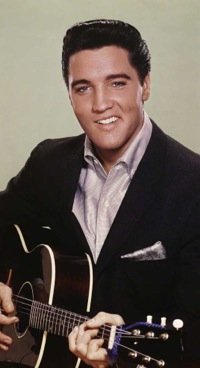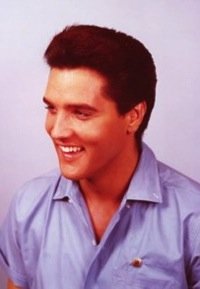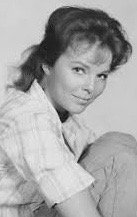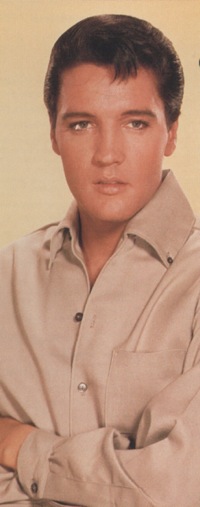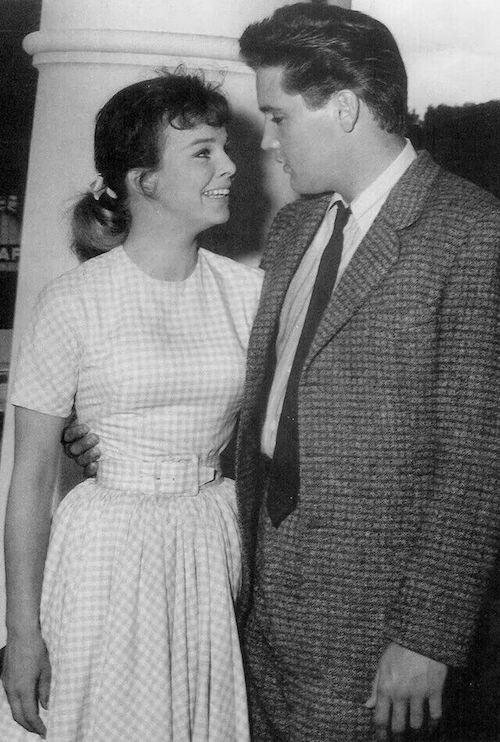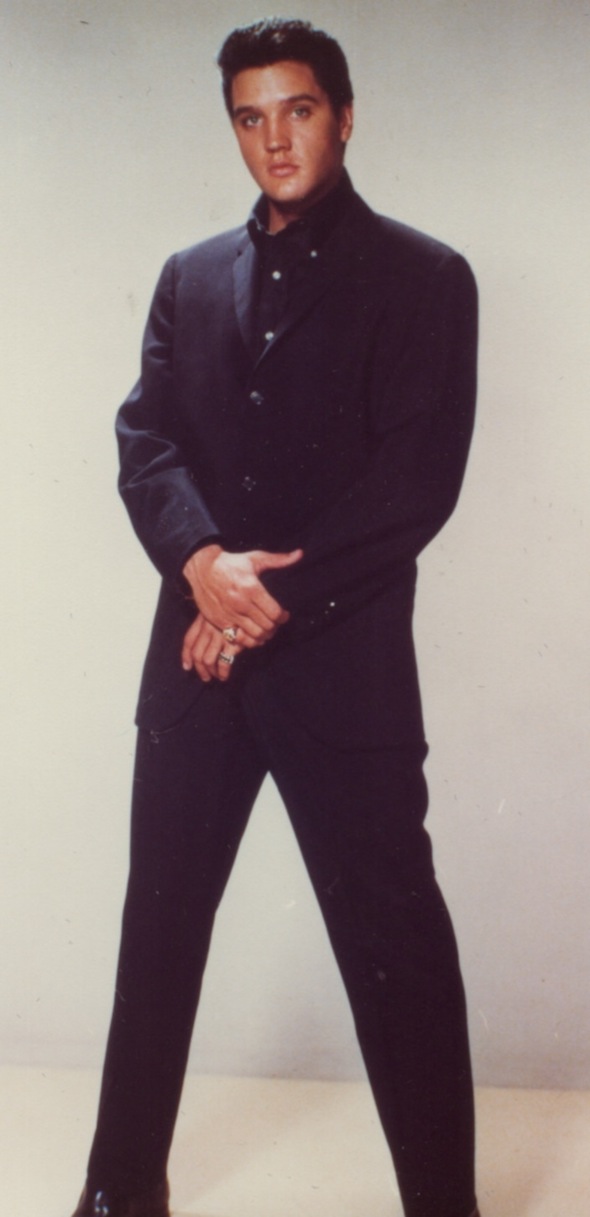Elvis History Blog
Behind the Scenes of …
"Follow That Dream"
Elvis Presley's 1961 Movie
On July 6, 1961, Elvis Presley stepped off a chartered bus in front of the Port Paradise Hotel in Crystal River, Florida. He was there to begin location shooting for his fifth movie since being discharged from the army just 16 months earlier. Stepping into the hotel parking lot, Elvis commented, “Boy, this is really a beautiful place.” The resort hotel would be home away from home, not only for Elvis, but also for the entire cast and crew, during five weeks of filming at multiple locations along Central Florida’s Gulf Coast.
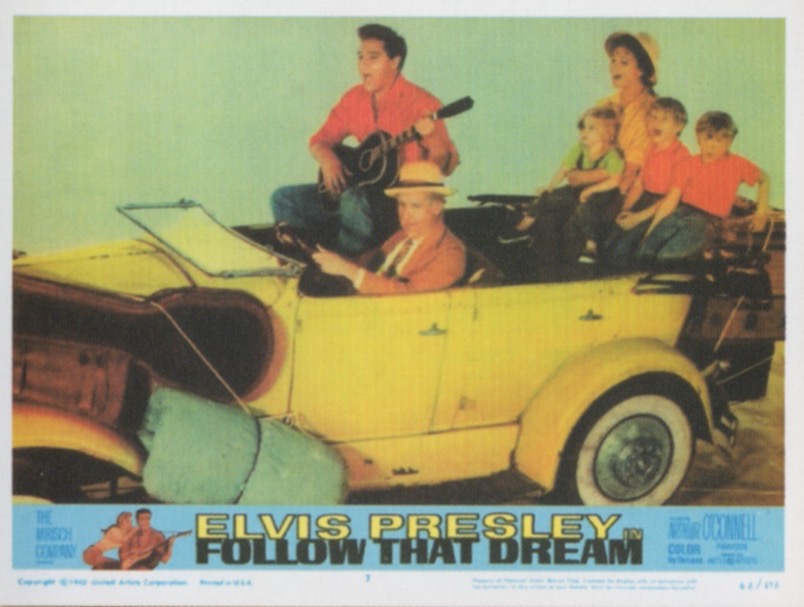
Excitement among the area’s teenagers and vendors had been building since Louella Parsons first mentioned Presley’s next movie in her August 12, 1960, Hollywood column. “With great glee,” she noted, “Harold Mirisch tells me that he has Elvis tied up for ‘Pioneer Go Home,’ based on a book by Richard Powell. “It’s a warm comedy,” Mirisch told her, “and Elvis will make it for us next spring.”
(As with many of Elvis’ films, the title of this one changed a couple of times from first announcement to final cut. It went from Pioneer Go Home to What a Wonderful Life to Follow That Dream. The last two were titles of songs Elvis recorded in Hollywood for the movie soundtrack before filming began in Florida.)
Before Elvis’ arrival, Central Florida newspapers had spread the news that Mirisch’s Presley movie would be filmed in the Sunshine State. The Tampa Tribune revealed the film company’s plans in its May 28, 1961, edition.
“Excitement, anticipation, or something of that nature, is rippling around several of the communities in Citrus County and neighboring Levy County, in the wake of word that a Hollywood movie company is preparing to film a number of sequences for an Elvis Presley movie ‘on location’ at a number of spots in the area. Plans are to use the courtroom in the courthouse at Inverness, a shoreside scene or scenes at Yankeetown in Levy County, and some outdoors views in the Ozello area of Citrus County.
“Anticipation among segments of the younger sets springs from the Presley influence, and among the chambers of commerce officials over the possible publicity value to the entire area. ‘Shooting’ is presently scheduled for early in July.”
• Leading Lady Revealed
While residents knew that Elvis was definitely coming, there was still some doubt about who would be his leading lady in the film. Just a month before Elvis arrived in Florida, Orlando Sentinel writer Mary Goldman reported that Tuesday Weld, who had appeared with Elvis the year before in Wild in the Country, would do so again in the new film. Even as late as the day after Elvis arrived in Crystal River, the Sentinel continued to report that “Miss Weld” would be on the set with Elvis when filming began. Astonishingly, the Sentinel suggested that she might even be more popular with area teenagers than Elvis.
“Presley, former idol of the teenage set, is still quite popular, but the teenagers have ‘gone’ more for the beautiful Miss Weld at the present time, than for Presley, the former king of rock and roll.”
In fact, Louella Parsons had already announced in her July 8 Hollywood column that Tuesday Weld had not been cast in the Presley movie because she wasn’t “southern enough for the part.” Instead, Parsons revealed the part had gone to Anne Helm, “a beautiful redhead with a lovely figure.” Parsons added, “Amusing part about this is that Anne isn’t southern either. In fact she hails from Canada. But she so perfectly portrayed a belle of the Deep South in a TV segment of “Route 66” that she gets this break with Presley.”
Helm’s casting as Presley’s leading lady by producer David Weisbart was hardly a “last minute” choice. She had been in Crystal River for over a week before Elvis arrived. After doing some work in front of the cameras on June 29, she was recognized while shopping in local stores. The Tampa Bay Times reported:
“Although Anne’s face isn’t too familiar to American movie-goers, her fame that rainy day quickly spread all over town. Her shopping sprints between takes were soon halted with fans seeking autographs. And sign she did, her sweet gamin face reflecting a hundred expressions as she wrote.”
Helm and all other actors in the cast were boarded with Elvis at the Port Paradise Hotel. Members of the company noted an immediate spark of interest between Elvis and Anne Helm … “They’ve been out together at least one evening,” revealed Art Sarnow, a Hollywood publicity man with the difficult task of coordinating with the ever-inquisitive press corps. Between scenes on the set, Elvis and Anne could be seen engrossed in conversation when not busy studying lines, getting make-up repairs, or posing for photographs.
The production team was led by producer David Weisbart and director Gordon Douglas. Although Colonel Parker was on site to watch over his famous client, he stayed behind the scenes at first, letting his assistant, Tom Diskin, feed information about Elvis to the press. The $1.5 million production budget included $600,000 for hotel bills and $300,000 for transportation.
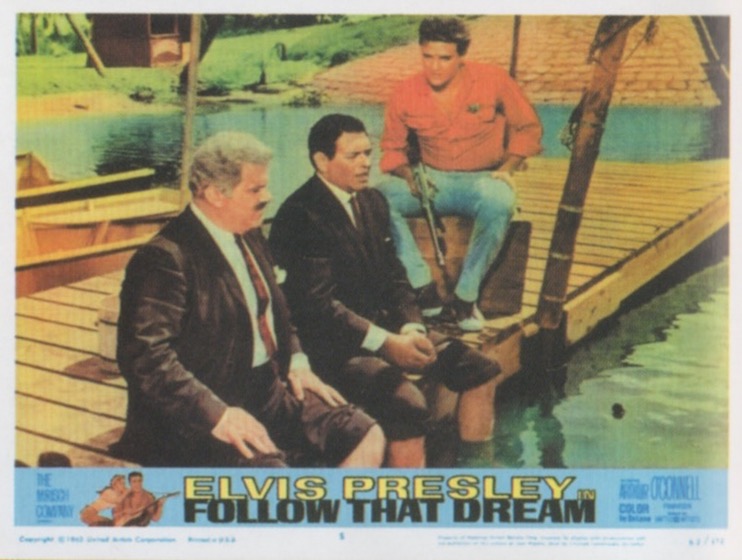
Of course, a group of Elvis’ Memphis buddies had accompanied him to Florida. On the chartered bus with him were cousin Billy Smith and Ray “Chief” Sitton, while Alan Fortas and Lamar Fike followed driving Elvis’ white Cadillac limo towing Presley’s new waterskiing boat. When a reporter asked about the crew, Diskin explained they keep Elvis in tough with the “real” world.
“Elvis’ pals are an important part of his success. They keep him in contact with the world. When you’re an entertainer, you’re on the road constantly. There’s always a flood of unfamiliar faces — never a familiar one — never a friend. Elvis takes his with him. It keeps him happy to have them at his side — and they get along well with him so they’re happy. It’s a form of security, I guess.”
There was plenty of official security on hand, though. Deputy Sheriff Louis Pielow and Crystal River police officer J.W. Bozeman were employed to provide security for Elvis at the hotel and on the movie set. Two uniformed guards stood watch at the entrance to his villa. Even other hotel guests rarely got to see Elvis. Only once during his stay did he eat in the hotel restaurant, and he never appeared in the hotel bar.
On his first day in Crystal River, though, Elvis did emerge from his hotel room to accommodate the curious crowd. In The Tampa Tribune, Neil Meffert described the scene. “Soon after his arrival Sunday a bevy of girls besieged his quarters and Presley finally came out to sign autographs. An enterprising visitor with a 60-second camera snapped pictures of each girl as she spoke to Elvis, then sold the prints for $1 apiece.”
• “Bird Creek Bridge” Location
By the first scheduled day of filming on Tuesday, July 11, a location company of near 70 had assembled at the Crystal River hotel. The first scenes with Elvis were scheduled to be shot on Bird Creek Bridge, State Road 40, near Yankeetown. A Miami News staff writer described the creek’s serene setting.
“Bird Creek is a usually peaceful stream running between the blue and placid Withlacoochee River and the Gulf. An occasional blue heron stands waiting for a perch. An occasional cottonmouth moccasin draws his design in the water. A crab fisherman goes by in a boat. Bird Creek is — usually — peace undiluted. But now it was somewhat different.”
Since The Tampa Tribune had revealed two days earlier that Elvis would make his first appearance before the cameras on Bird Creek Bridge that day, if was no surprise when a large crowd of spectators was on hand to see the action. When Miami News writer John Keasler showed up, an irate deputy sheriff threatened to arrest his news photographer for “invasion of privacy.” While the guards were busy confronting the photographer, Keasler slipped through the security lines and walked across the bridge to where Presley was standing.
“How it’s going?” he asked. “Pretty good,” Elvis responded. After some small talk, Keasler revealed that he, like Elvis, had attended Humes High School in Memphis. Presley expressed some interest, and the two men chatted a bit about Memphis a. Finally, Keasler said, “Well, we’re glad to have you down here,” and after a “glad to be here” from Elvis,” Keasler “braced himself for the walk back through the crowd and security forces on the other side of the bridge.
In his Miami News article, Keasler noted of Elvis, “Everyone who has met him has said they found him to be a very nice, down-to-earth lad without a trace of Hollywood, and that’s the way he seemed to me. If he ever gets tired of that guitar he should take a job as public relations man for Hollywood.”
Neil Meffert of The Tampa Tribune was also on scene at the Bird Creek Bridge. He described the moment when the cameras began to roll.
“America’s Number One Teen-Ager’s Idol leaned laconically on a shovel. Hot July sun beat down on his handsome head. He wiped sweat from his face on a brown khaki shirtsleeve, carefully so as not to spoil his makeup. He half-turned, displayed a familiar crooked grin at someone on the sidelines. He waited with no sign of impatience as arc lights were adjusted, sound equipment tested, cameras jockeyed into position, and other actors took their places.
“Finally someone yelled ‘Quiet everybody!’ and somebody else yelled ‘Take One,’ and the first scene of Elvis Presley’s new movie was under way.”
• Yankeetown Location
When the actors and film crew moved into Yankeetown to shoot scenes on Thursday, July 13, so did the crowds hoping to catch of glimpse of Elvis. In a Tampa Bay Times article, Arlene Alligood noted that such “glimpses” were rare.
“Ask any resident of the little fishing resort just how much he sees of Presley and he’ll answer ‘nothing.’ Elvis is there to work, and hours spent signing autographs and talking to fans just aren’t included in a tight shooting schedule. But still the fans flock to Yankeetown. They come from Tampa, St. Petersburg, Ocala, Gainsville, Jacksonville — and even some from out of state — all with hopes of seeing Elvis. No one seems particularly disappointed when a day of standing in the summer sun nets only a fleeting glimpse of the singing star.”
On the set in Yankeetown, Anne Rowe, assistant women’s editor for The Tampa Tribune, was granted an interview with Elvis. (She was told it was only because Elvis remembered that she had interviewed him when he was touring Florida in 1956 and he considered her a friend.)
The interview took place while Elvis was laying low with his Memphis pals in his white Cadillac limo. Rowe was led to the car and asked her questions while leaning through an open window. “The car is his home away from home,” she revealed in her article the next day, “a haven from peering eyes, the shrieks and sighs of flocks of fans who have flooded the Yankeetown area, scene of the filming. He eats in the car, he naps in the car, he talks in the car. And he keeps cool in the car. With the motor running constantly — and the air conditioning on — it’s a sanctuary from the glaring sun of a Florida summer.”
Rowe’s probing questions were more about Elvis the man than Elvis the actor. She shared her observations in her Tribune article the next day.
“Ask any resident of the little fishing resort just how much he sees of Presley and he’ll answer ‘nothing.’ Elvis is there to work, and hours spent signing autographs and talking to fans just aren’t included in a tight shooting shedule. But still the fans flock to Yankeetown. They come from Tampa, St. Petersburg, Ocala, Gainsville, Jacksonville — and even some from out of state — all with hopes of seeing Elvis. No one seems particularly disappointed when a day of standing in the summer sun nets only a fleeting glimpse of the singing star.
“At 26, Elvis still has the boyish quality about him that was his in 1956. He makes you think he doesn’t take anything seriously. But you talk to some people who work closely with him and you learn the youthfulness of his manner is deceptive. It conceals shrewdness and good common sense.
“He’s polite and attentive when you speak with him … His voice is soft — but clear — his words only slightly touched with the flavor of the South. He moves slowly — as though there were no hurry about anything. He laughs easily — and his hazel eyes, framed with long dark lashes, glisten with amusement when he’s chuckling over a joke. He kids freely with anyone whose face is familiar to him. It seems the small-town boy who hit it big thinks life is a lark — to live every minute of it with optimism — and fill each second of it with fun.”
One young Yankeetown man was very impressed with Elvis when the two had a conversation later that day. “He’s sure a happy-go-lucky guy,” said the service station attendant who worked on Presley’s Cadillac after it overheated. “He didn’t seem the least bit worried about his car,” the attendant noted.
A summer storm cut the day’s filming short, and Elvis headed back to his Port Paradise secluded hotel room where the two uniformed guards were still standing watch at the entrance. (One of the guards later revealed that Elvis spent every night of his stay in his villa, except one, when he left at 11 p.m. and didn’t return until 3 a.m.)
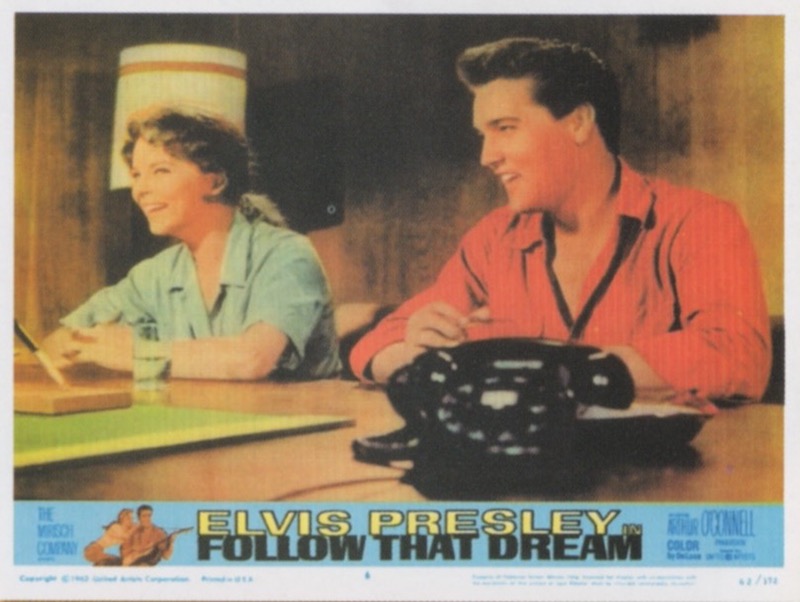
• The Lost Opening Scene
The next day, July 14, Elvis was back in Yankeetown to shoot the movie’s opening scene. “Elvis appeared natural and at ease before the cameras,” reported Neil Meffert in The Tampa Tribune. “Cooperative and polite, his reply to instructions or comments from Director Gordon Douglas was an inevitable, ‘Yes, sir.’”
Meffert then described the setup and action.
“America’s Number One Teen-Ager’s Idol leaned laconically on a shovel. Hot July sun beat down on his handsome head. He wiped sweat from his face on a brown khaki shirtsleeve, carefully so as not to spoil his makeup. He half-turned, displayed a familiar crooked grin at someone on the sidelines. He waited with no sign of impatience as arc lights were adjusted, sound equipment tested, cameras jockeyed into position, and other actors took their places.
“Finally someone yelled ‘Quiet everybody!’ and somebody else yelled ‘Take One,’ and the first scene of Elvis Presley’s new movie was under way.”
From then on, though, nothing seemed to go right. A dialogue scene, in which Arthur O’Connell informs his son, Elvis, that the family was going on a vacation, had to be done several times.
“Vacation from what? Ain’t none of us workin’,” was Elvis’ line.
“Vacation from marriage.”
“Whose marriage?”
“Yours, that’s whose. That Georgia Patterson is back and ready to start chasing you again. You remember last summer you started out buying her a Coke and wound up taking a blood test and buying a marriage license.”
“That’s what comes of drinking a Coke behind the pool hall,” said Elvis.
This father-son bit was interrupted several times by noise on the set, Meffert noted.
“The script called for 8-year-old twins Gavin and Robin Koon, Los Angeles youngsters who are making their movie debut, to be hiding under the house during the scene. In normal manner of 8-year-old boys they scuffled, giggled and yelped, disrupting the sound track several times. Two ‘grips’ jiggled a light reflector and discussed its malfunction. They were quieted. Next from the background came shouting from truck drivers. Then two teen-age girls who somehow eluded the guards strolled onto the set, all a-giggle. At each interruption the scene had to start all over again.”
Elvis and the other actors remained at ease, but Mefffert observed that the director and production staff were “outspokenly displeased.”
That might have had some bearing on the decision to cut that planned opening scene from the movie entirely. Subsequent to the vacation announcement, the family, including Elvis, a foster daughter (played by Miss Helm), the twins (also foster children), and a 3-year-old girl (played alternately by Pam and Kat Ogals) were to depart on the trip in their Model “A” touring car. Instead, in the film’s final cut, the family is already driving down the road as the opening credits appear.
• Ocala Location
When Elvis arrived in the small Florida town of Ocala the morning of Saturday, July 15, he was greeted by a crowd of all ages. Paul Ferguson was there to record the reception for The Orlando Sentinel.
“Grandmas, mothers, teenage girls, and the tiny tots went wild over the six footer who ‘egged’ them on somewhat with his peek-a-boo entrances and exits from a trailer turned dressing room parked outside the Commercial Bank and Trust Co.
“Security guards manned their posts at 7 a.m. yesterday, but the fans had them beat. More than 300 were milling about the back property, and by the time the movie crews arrived to get ready for the big star, more than 2,000 had lined the streets and traffic had to be re-routed on side streets.”
Elvis didn’t show up for the cameras until about 10:30, when his white Cadillac limo, escorted by a Citrus County deputy sheriff, drove through Ocala’s main street to the bank building. While the scene was being setup in the bank, newsmen were invited into Elvis’ trailer to interview him and take pictures of Elvis and Anne. Elvis’ demeanor surprised Ferguson.
“Elvis isn’t the coarse, impudent backwoods singer as he has been billed. He gives the appearance of being somewhat naïve, and isn’t cocky at all. ‘It takes a lot of hard work by a lot of people other than myself for me to make the grade. It can’t be done by yourself. You have to have a lot of help. For years, I toured around the country barely meeting expenses.’
“I’m not ready for a heavy dramatic role,” he admitted. “Movies are more fun than live television, but I still make public appearances.” Of his many fans, Elvis said, “I love every one of them. Without them, Uncle Sam couldn’t make so much money off me.”
When the cameras were ready for the actors, Elvis left the trailer and walked up to the crowd, roped off and being held back by policemen. Ferguson saw a lady he judged to be in her late sixties, reach out her hand. When Elvis grabbed it, she cried out, “He touched me,” and went to her knees with tears in her eyes.
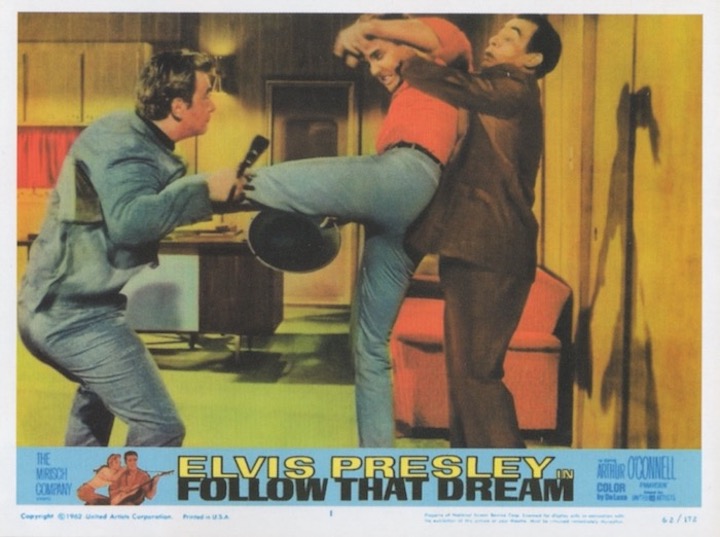
The only locals able to see the filming that took place that Saturday afternoon in Ocala’s Commercial Bank and Trust Company on Silver Springs Boulevard were extras, including some from the Marion Players of Ocala, a local amateur theatrical group.
Two-dozen police officers and special duty “lawmen” were assigned special security duty while Elvis was in Ocala. They handled traffic and crowd control in temperatures over 90 degrees. “He was an okay guy,” Sheriff Stan Malevar told Orlando reporter Paul Ferguson. “He would talk to you, tell all about himself and what he plans to do in the future whenever he got a break.”
Ferguson was amazed at how accommodating Elvis was with the officers, reporters, and crowds.
“Presley’s karate demonstration astounded the lawmen. While shooting inside the Commercial Bank and Trust Co. Saturday afternoon, Presley spent a 30-minute break giving the lawmen a demonstration of his three years of training in the Oriental method of self-protection.
“Presley seemed to enjoy working under those hot lights inside the bank. He took his breaks from the cameras by signing autographs for the extras who are taking small parts in the movie, and allowing newsmen to shoot more pictures. He stopped his study of the movie script to give the reporters a few minutes to talk with him, and promised, ‘Holler when you want a shot. I’ll stop.’”
Perhaps the busiest person in Ocala that day was Gordon Welch. A member of the Ocala Police Department, Welch wasn’t a bit interested in the Hollywood movie being shot in the town. Walking around downtown, he stopped occasionally to do some writing. On his parking meter beat that Saturday, he issued 160 overtime parking tickets by 10:30 in the morning.
• Inverness Location
A drenching rain spoiled planned photography in Inverness, a Suncoast community, about 90 miles northeast of St. Petersburg. Still, Inverness film fans came out in their raincoats and hats and patiently waited for the movie stars to arrive. Elvis didn’t appear that day, but some in the crowd did see Anne Helm doing some shopping in local stores.
On Friday, July 21, Florida state highway patrolmen, deputies, conversation agents, and Inverness police officers escorted the movie entourage back into the town for several days of camera work on the courthouse square and in nearby buildings. The Tampa Tribune’s Bill Blalock described the extensive support the state was supplying the film company.
“The state conversation men were aiding the picture-makers find suitable locations for the outdoor scenes, and in several instances helped round up live fish for required ‘props,’ while the lawmen aided in handling the traffic and did escort work. On hand was a county mosquito control truck, and the unit was ready for spraying on the movie sets should the need arise, either here or elsewhere in the county.
“Residents of the area similarly are on the payroll as movie extras or playing bit parts, or ‘getting in the picture” without recompense to help the cause along. It is bringing in many spectators who spend money in the restaurants, stores and even motels, and is boosting the economy through the spending by the movie-makers themselves for supplies and wages, as well as providing some jobs for local people.”
Two weeks later, on August 5, 1961, the cameras, production workers, and the entire cast returned to Inverness to shoot the final location scenes of Follow That Dream. Over several days, the action in the town’s courthouse offered crowds of area spectators their final chances to see how a Hollywood movie was made.
Background filming in the area would continue for a couple of weeks, but Elvis would be gone before most people in the area knew it.
• Elvis Leaves Florida
On August 12, 1961, a black Cadillac transported Elvis, Anne Helm, Arthur O’Connell, and Colonel Parker to the Tampa airport. The next day, Tampa Tribune writer Paul Wilder reported, “Elvis Presley sailed into the dawn from Tampa at 8:45 yesterday morning for Chicago, where he transferred to a Continental jetliner and flew on to Los Angeles yesterday afternoon. The rest of the location company at Crystal River will wind up this week, and then they too will return to Hollywood.”
Wilder then put a final stamp on his reporting about Elvis Presley’s movie-making in Central Florida:
“Things were about returning to normal over the area, after weeks of milling throngs of youthful and older Presley fans, and steady streams of sightseers ranging the countryside in the wake of the movie caravan shifting from location to location. There is some consolation in the fact that the seagulls and egrets and other wildlife out here on Bird Creek at Yankeetown — where the main set was located — can return to their peaceful pursuits.”
• Hollywood Location
Although Follow That Dream has outdoor Florida written all over it, many of the interior scenes were actually shot in Hollywood in September 1961. Those Hollywood columnists in Colonel Parker’s good graces were invited to watch some of the studio filming. Harrison Carroll was one of them. In his September 5, 1961, column, he wrote:
“As I arrive (at Samuel Goldwyn Studio), director Gordon Douglas is about to shoot a scene where Elvis and Anne Helm come over with a pot of coffee to pay a neighborly call on a trailer where two slick gamblers, Simon Oakland and Jack Kruschen, are operating a floating crap game.
“Elvis and Anne are greeted by Kruschen. They stare at the crap table in the foreground … ‘What’s that?’ asks Anne, looking at the dice layout. ‘That’s a pool table,’ says Elvis, ‘although it’s the first one I ever saw without pockets.’
“After the dialogue is over, script girl Dolores Rubin calls to Presley: ‘Elvis, remember that coffee pot is supposed to be hot.’
The whole routine makes Elvis out as such a square that I question O’Connell. ‘Well,’ he says, ‘I play a sort of a Jester Lester, and Elvis is my son.’
I turn to producer David Wiesbart. ‘What goes?’ I ask. ‘Is Elvis playing Li’l Abner?’
‘That’s an over-simplification,’ he explains. ‘Elvis plays a young man with built-in truth. He’s not a square. He just has a completely honest approach to everything.’”
* * * * *
Principal photography on Follow That Dream was completed in Hollywood on August 23, 1961. The film’s premiere showing was held on April 11, 1962, before an appreciative local audience at the Marion Theatre in Ocala, Florida. — (© Alan Hanson | April 2024)
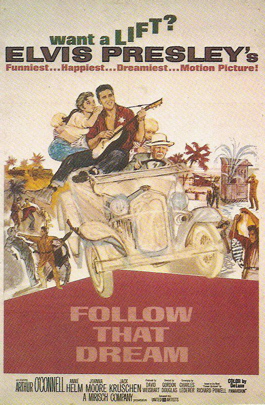
“Anticipation among segments of the younger sets springs from the Presley influence, and among the chambers of commerce officials over the possible publicity value to the entire area.”
— Tampa Tribune
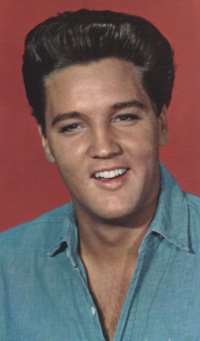
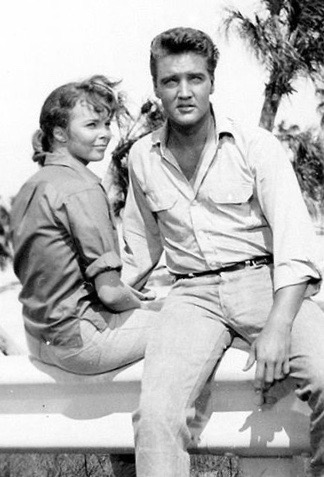
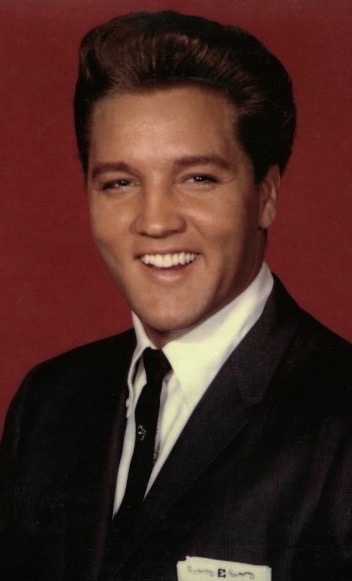
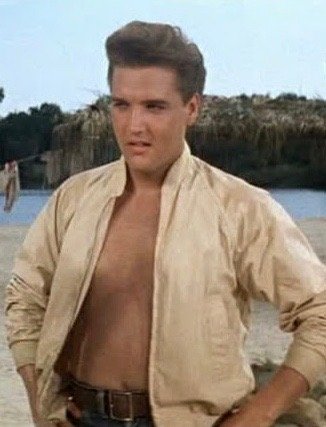
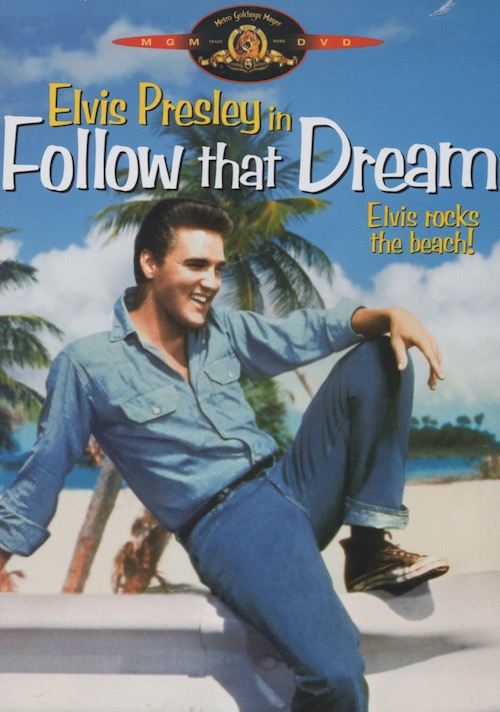
"Everyone who has met him has said they found him to be a very nice, down-to-earth lad without a trace of Hollywood"
— Tampa Tribune
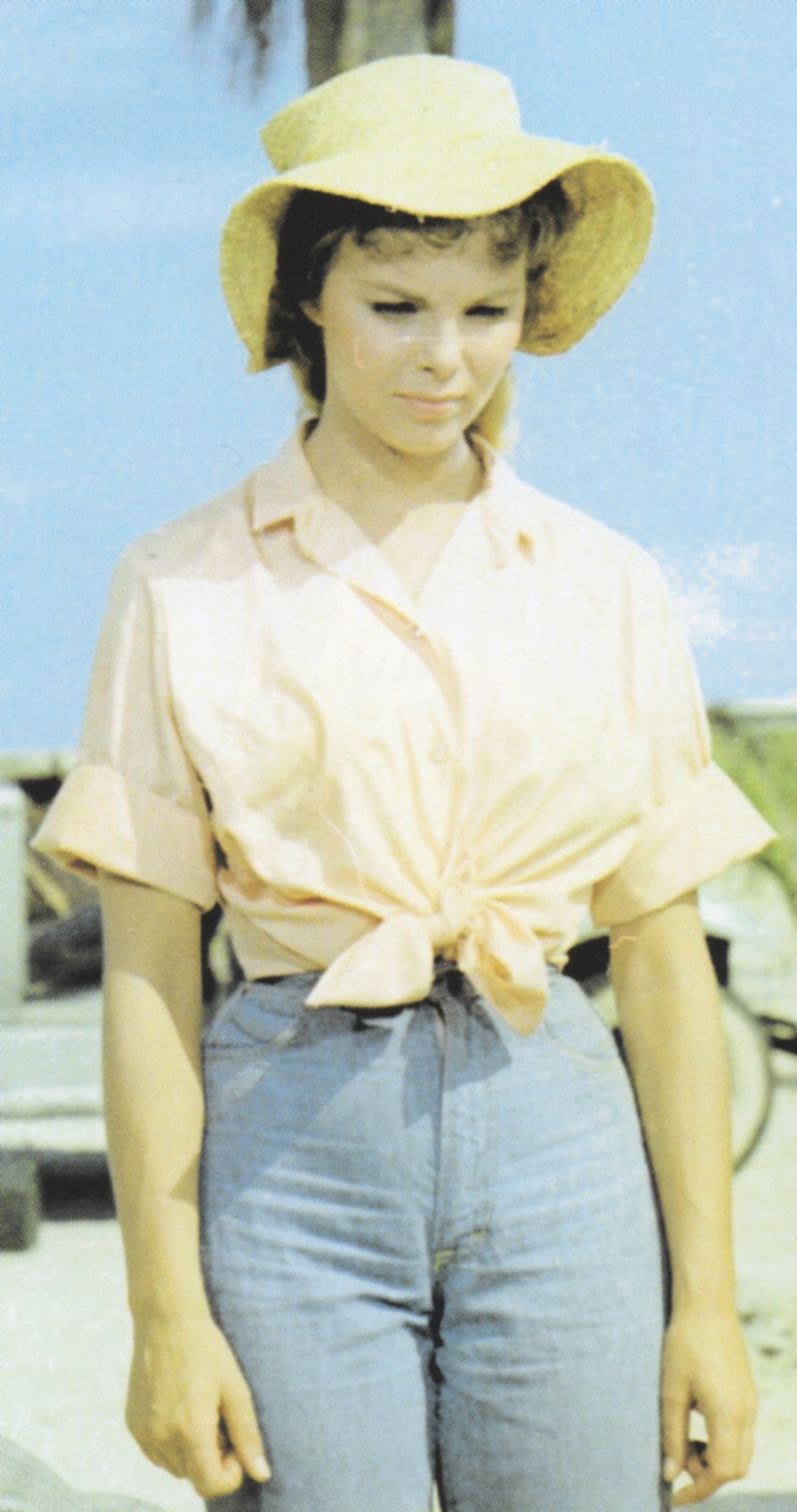
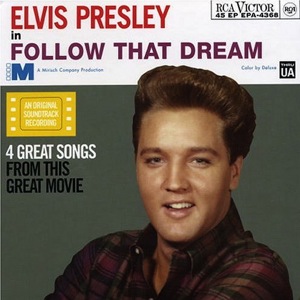
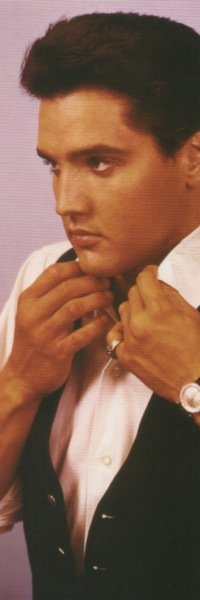
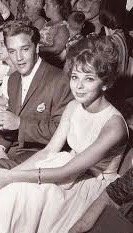
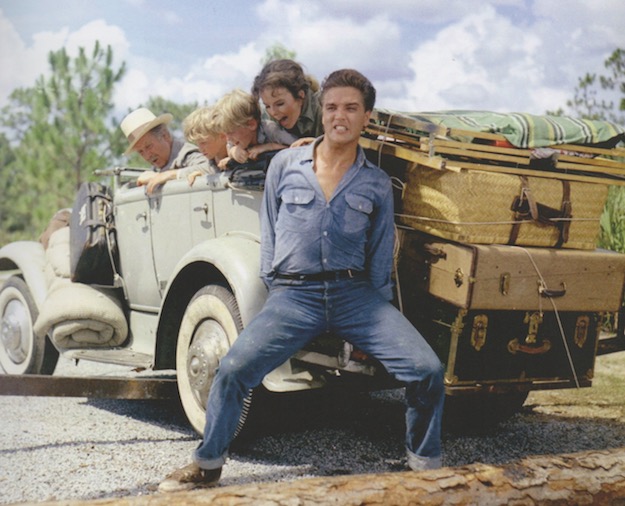
"Grandmas, mothers, teenage girls, and the tiny tots went wild over the six footer who ‘egged’ them on somewhat with his peek-a-boo entrances and exits from a trailer turned dressing room."
—Tampa Tribime
